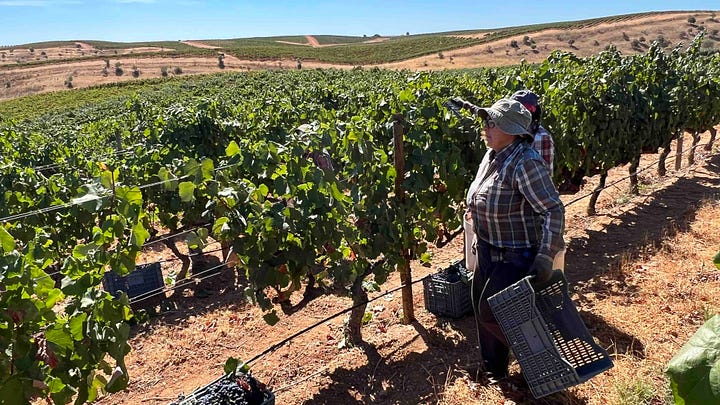What do Jimmy Hendrix, Elton John and Queen Elizabeth II all have in common?
They all used to enjoy a glass of Mateus Rosé when it was one of the world’s most popular wines in the 1960s and 70s.
Elton sang about “getting juiced on Mateus”, Jimmy Hendrix was photographed drinking from the bottle, and we understand the Queen preferred to use a glass.

The distinctive bottle design was based on a Portuguese First World War water canteen and it took the name and image of a local palace.
Not convinced, the manor’s owners took the option of a one-off payment for the rights, rather than a share of the profits...something they’ve no doubt regretted ever since.


Rosé hasn’t traditionally been a popular drink in Portugal, so it’s outsiders it appeals to – even if that is now starting to change.
The story of Mateus Rosé and the giant Sogrape empire began during a Port wine crisis at the height of the second world war and continues to this day.
Mateus Rosé is still Portugal’s biggest wine export, with a bottle being sold every 90 seconds...and the story is always at the heart of it all.
And the stories of wine and winemaking are also at the heart of Ana & Al’s Big Portuguese Wine Adventure.
This podcast season is all about Alentejo, so Episode 7 heads deep into the vineyards and cork forests to visit Sogrape’s beautiful new Herdade do Peso winery in Vidigueira – home to one of the most recognisable and popular Alentejo wines.
The black-pig-on-an-orange-label is called Trinca Bolotas, or “acorn muncher” reflecting the importance of the porco preto pigs which live off acorns in the savannah-like plains, known as montado in Portugal and dehesa in Spain.
As I wrote in a BBC article on Why Cork in Making a Comeback, it’s a biodiverse landscape of cork, holm oaks and olive trees where black Iberian pigs snuffle acorns, deer and wild boar roam the shrub alongside the cattle, sheep and goats that graze the interwoven pastures.
The ecosystem sustains the endangered Iberian lynx, and threatened Imperial and Bonelli Eagles, but it's also a man-made landscape which has thrived for hundreds of years on the proceeds of cork.
The yellow labelled Sossego shows the image of a giant holm oak and its name means the nostalgic feeling of tranquil calm that’s often associated with the Alentejo.
Herdade do Peso’s imagery gives us a good excuse to join the cork harvest and meet the axe-wielding men who roam the countryside every summer, prizing precious cork bark from ancient trees.
Half the world’s cork is produced in Portugal, where a third of the world’s cork trees grow – most of them in Alentejo.
The cork industry is big business, and so we visit Amorim – the world’s largest cork producer – to discover the many different uses of cork and how new technology is creating new materials and removing the “cork taint” which can leave fine wines “corked” or tasting cardboardy.
I’ve written more about it in a previous despatch:
Corking idea:
Of all the various ways we are being told to help save the planet I’ve found one I like the most: drink more wine.
Herdade do Peso produces a range of wines – from the popular Trinca Bolotas to fine estate wines such as Revelado, Reserva, Parcelas and Ícone which sells for more than €100 a bottle.


We visit at harvest time to see how the winery uses a combination of gentle-giant picking machines and traditional singing hand-pickers to strike a good balance of efficiency and quality.
And we meet winemaker Luís Cabral de Almeida who won the coveted Revista de Vinhos winemaker of the year title in 2023.

I hope you enjoy the latest episode of Ana & Al’s Big Portuguese Wine Adventure.
There are more in the pipeline, and next episode we’ll be heading to the winemakers winery: the iconic Mouchão, to learn about a French grape which Portugal has made its own.
Maybe you’re reaching for a bottle of Mateus Rosé again this Christmas, but why not also try something a bit different...try some Trinca Bolotas and maybe munch some Alentejo acorns instead!
Happy holidays one and all.
A&A
















Share this post